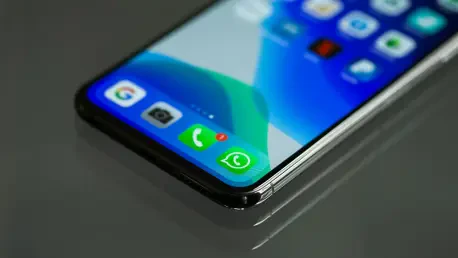I’m thrilled to sit down with Rupert Marais, our in-house security specialist with a wealth of expertise in endpoint and device security, cybersecurity strategies, and network management. Today, we’re diving into the exciting world of Pwn2Own Ireland 2025, a premier hacking competition that draws the brightest minds in the cybersecurity community. We’ll explore the event’s significance, the jaw-dropping prizes for exploits targeting platforms like WhatsApp and high-end smartphones, the introduction of new attack vectors, and the evolving challenges in securing modern devices and wearables. Let’s get started!
What makes Pwn2Own Ireland 2025 such a significant event in the hacking and cybersecurity world?
Pwn2Own Ireland 2025 is a flagship event for the hacking community, organized by Trend Micro’s Zero Day Initiative. It’s a platform where the world’s top security researchers come together to test their skills by finding and exploiting vulnerabilities in popular software and devices. Held in Cork, Ireland, from October 21-24, it’s a big deal because it not only highlights critical security flaws but also drives vendors to patch them quickly. The event’s competitive nature and massive prize pools make it a proving ground for cutting-edge exploits, shaping the future of cybersecurity.
How does Meta’s sponsorship this year influence the event, particularly with the massive rewards for WhatsApp exploits?
Meta’s involvement as a sponsor for Pwn2Own Ireland 2025 has really upped the ante. Their focus on WhatsApp, with prizes as high as $1 million for a remote code execution exploit requiring no user interaction, shows how seriously they’re taking the security of their platform. This sponsorship not only brings attention to potential vulnerabilities in widely used apps but also incentivizes researchers to dig deep, ensuring that flaws are found and fixed before malicious actors can exploit them. It’s a win-win for both Meta and the security community.
Can you explain what a hacker needs to achieve to claim the $1 million prize for a WhatsApp remote code execution exploit?
To win the $1 million prize, a hacker must demonstrate a remote code execution exploit on WhatsApp with zero user interaction. That means the attack has to happen without the user clicking anything, opening a message, or taking any action. It’s the holy grail of exploits because it’s completely stealthy—think of it as a silent break-in where the target doesn’t even know they’ve been compromised. This level of access could allow an attacker to run malicious code on a device, potentially taking full control, which is why the reward is so substantial.
There’s also a $500,000 prize for a one-click remote code execution on WhatsApp. What does “one-click” mean in this context?
“One-click” refers to an exploit that requires minimal user interaction—just a single action, like clicking a malicious link or opening a crafted message. Unlike the zero-click exploit, the user has to do something, even if it’s seemingly harmless. Once that click happens, the attacker can execute code remotely on the device. It’s still incredibly dangerous because social engineering can easily trick users into that one click, and the hefty $500,000 prize reflects how critical these vulnerabilities are to patch.
What’s behind the $150,000 prize for a zero-click account takeover on WhatsApp, and why is this type of exploit so valuable?
A zero-click account takeover means an attacker can gain full control of a user’s WhatsApp account without any interaction from the user—no clicks, no prompts, nothing. This is hugely valuable because it’s undetectable to the average person until it’s too late. Once an account is taken over, attackers can access private messages, impersonate the user, or even spread malware to contacts. The $150,000 prize underscores how devastating this could be on a platform with billions of users, making it a top priority for Meta to secure.
Why are exploits granting access to things like microphone, video feed, or sensitive data on WhatsApp worth up to $130,000?
These areas—microphone, video feed, and sensitive data—are high-priority targets because they represent direct invasions of privacy. If an attacker can listen in through a microphone or watch via a camera without the user knowing, or steal personal data like chats or photos, it’s a massive breach of trust and security. These exploits, worth up to $130,000, are critical because they can be used for espionage, blackmail, or identity theft. Protecting these features is essential for user safety, which is why the rewards are so significant.
Smartphones like the Pixel 9 and iPhone 16 carry prizes up to $300,000 for remote exploits. What makes these devices such important targets at Pwn2Own?
The Pixel 9 and iPhone 16 are flagship devices used by millions, packed with personal and professional data, making them prime targets for attackers. Their operating systems are designed with heavy security layers, so finding a remote exploit—where an attacker can compromise the phone without physical access—is incredibly challenging. A $300,000 prize reflects both the difficulty and the impact of such a breach, as it could expose vulnerabilities affecting a huge user base. These challenges push researchers to uncover flaws that manufacturers can then fix.
USB has been introduced as a new attack vector this year. Can you shed light on what that means and why it’s a notable addition?
Adding USB as an attack vector means hackers can now explore exploits that leverage physical connections, like plugging in a malicious USB device or cable. It’s significant because USB ports are ubiquitous on devices, often trusted by users, and can be an entry point for malware or unauthorized access. This addition broadens the scope of the competition, reflecting real-world attack scenarios where physical access might be exploited. It challenges researchers to think beyond remote hacks and tests the security of hardware interfaces.
What can you tell us about the prizes for hacking Meta wearables like Ray-Ban smart glasses and Quest VR headsets, and what kinds of vulnerabilities might hackers be looking for?
Meta wearables, like the Ray-Ban smart glasses and Quest VR headset, have prizes ranging from $30,000 for jailbreaks to $150,000 for zero-click remote code execution. Hackers are likely looking for vulnerabilities that could allow access to cameras, microphones, or user data stored on these devices, or exploits that let them control the hardware remotely. These wearables are deeply integrated into users’ lives, capturing sensitive information, so any flaw could be highly invasive. The prizes reflect the growing importance of securing emerging tech like this.
Looking ahead, what’s your forecast for the future of hacking competitions like Pwn2Own and the evolving landscape of cybersecurity challenges?
I think hacking competitions like Pwn2Own will continue to grow in scope and importance as technology evolves. We’re seeing more connected devices—think IoT, wearables, and even automotive systems—becoming targets, and the attack surface is only expanding. The future will likely bring even bigger prizes as companies recognize the value of crowdsourcing security through these events. On the cybersecurity side, challenges will shift toward AI-driven attacks and defending against them, as well as securing complex ecosystems where devices interact. It’s an exciting, ever-changing field, and events like Pwn2Own will remain at the forefront of identifying and addressing those risks.









